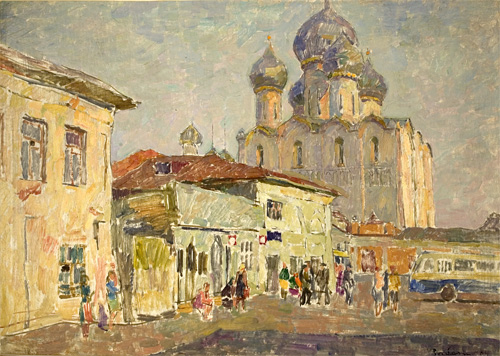Rooted in the disciplined, academic traditions of the Soviet system, contemporary Russian Realism stands as a testament to both cultural heritage and artistic mastery. Its foundations were laid in the 18th and 19th centuries, when realism—imported from the French academies—became the dominant style of the Russian art world, prized for its technical rigor and its capacity to reflect everyday life with honesty and depth.
Following the Bolshevik Revolution in 1917, however, this tradition was abruptly challenged. Avant-garde movements sought to sever ties with the past, pushing realism to the margins and prompting many classically trained artists to flee the country.
But by the early 1930s, under Joseph Stalin’s directive, realism was revived, not only as an artistic approach but as a vehicle for national identity. Seeking to promote the cultural supremacy of the Soviet Union, the state began to underwrite classical arts education through institutions like the Surikov State Academic Institute in Moscow and the Repin Institute in St. Petersburg. From this ideological and academic foundation, Socialist Realism emerged: a style shaped by history, yet deeply personal in its execution.

Throughout the Soviet period, though, many artists tried to maintain honest realism alongside their state-mandated art of political theatre. Later artists like Vyacheslav Zabelin, Gennady Korolev, and Nikita Fedosov, returned to the honesty of the tradition, focusing mostly on pastoral themes with subtle color transitions and vibrant color palettes. Russian Realism had survived political manipulations, stronger and more beautiful than ever.
Those last artists, and similar, represent the core of our gallery’s commitment to preserving and showcasing Russian Realist art.